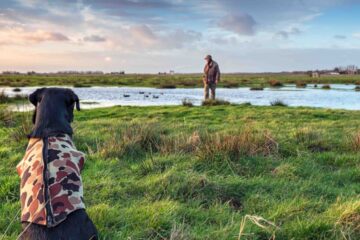The Environment, Food and Rural Affairs (EFRA) committee has recently published their cross-party report on flooding. They call on the government ‘to show leadership’ in the face of an escalating climate crisis. The report focuses on a whole catchment approach and highlights the urgency of the task.
BASC responded to the inquiry stating that the shooting community should be considered an essential partner in future flood risk policies. Our response highlighted that shooting activities influence over 14 million hectares of land in the UK and shooters invest 3.9 million workdays on conservation annually. With the right incentives the shooting community can be a key asset in local natural flood risk management as discussed in the report. By targeting the planting of trees, as well as creating dams, enhancing wetlands carrying capacity and creating ponds – shooters are already playing their part in ‘slowing the flow’ and reducing the risk downstream. With an integrated plan and meaningful engagement with local communities the government can succeed in tackling flooding and utilise the work undertaken by BASC members to their benefit.
Despite the efforts from anti-shooting groups, grouse moors and management practices have not been identified in this report as a cause of flooding. The report is clear that extreme weather events can occur anywhere and at any time. As our response highlighted grouse moor managers are not an obstacle to developing integrated flood risk policies but an asset. Indeed they have been implementing flood alleviation management projects for decades. Grouse moor management is a cost-effective nature-based solution to deal with flooding and the broader climate change emergency.
There is an enthusiasm to continue this work and build partnerships with key stakeholders moving forward, the most recent example of this is a grouse moor partnership in the Northern Pennines that has successfully restored over 3,343 acres of peatland, helping to fight climate change and reduce flood risk.



